nikon dslr d3300 manual
The Nikon D3300 is an entry-level DSLR camera featuring a 24.2MP CMOS sensor, designed for high-resolution imaging and ease of use, ideal for beginners and photography enthusiasts.
1.1 Key Features of the Nikon D3300
The Nikon D3300 boasts a 24.2-megapixel CMOS sensor, delivering high-resolution images with crisp details. It features an 11-point autofocus system for precise subject tracking and a 3-inch LCD screen for easy image review. The camera supports full HD video recording at 1080p with continuous autofocus. It also offers manual controls and various shooting modes, including Scene Modes and Effects. Compatible with Nikon’s F-mount lenses, the D3300 is lightweight and ergonomic, making it ideal for entry-level photographers. Its battery life supports up to 700 shots, ensuring extended shooting sessions without frequent recharging.
1.2 Technical Specifications
The Nikon D3300 features a 24.2-megapixel APS-C CMOS sensor with a maximum resolution of 6000 x 4000 pixels. It supports an ISO range of 100-12800, extendable to 25600. The camera offers 11 autofocus points and shoots continuously at 5 frames per second. Video recording is available in Full HD (1080p) at 60, 50, 30, 25, and 24fps. The D3300 uses an EXPEED 4 image processor and supports SD/SDHC/SDXC memory cards. It weighs approximately 410g without the lens, making it lightweight and portable for everyday use.
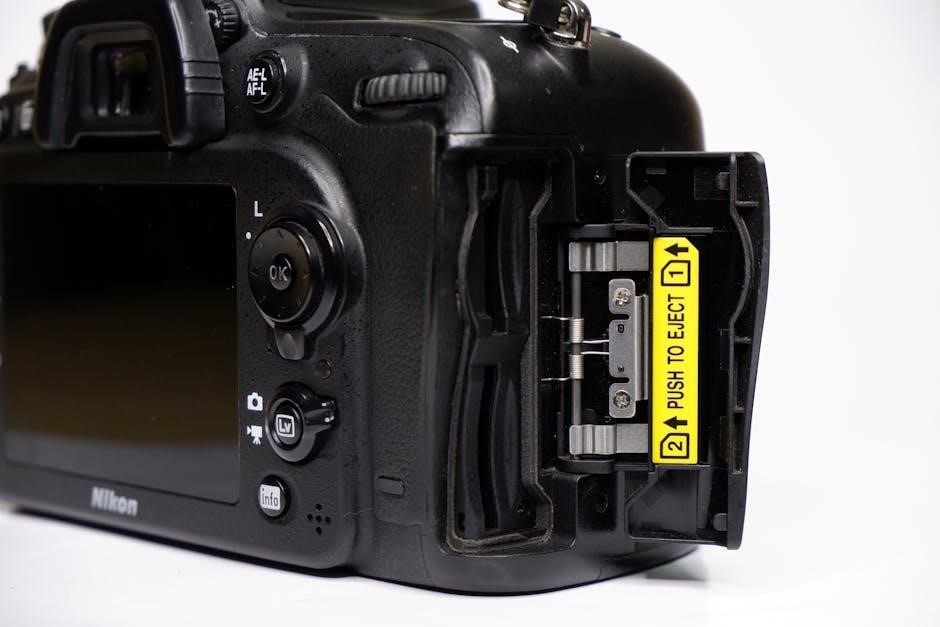
Camera Parts and Controls
The Nikon D3300 features a mode dial, navigation buttons, and a rear LCD screen. Key components include the lens mount, shutter button, and command dial for intuitive operation;
2.1 Exterior Components Overview
The Nikon D3300 features a lightweight and durable polycarbonate body with a textured rubber grip for comfortable handling. The exterior includes a 3-inch LCD screen, optical viewfinder, and a mode dial on the top. The lens mount is compatible with Nikon F-mount lenses, with AF-S and AF-I lenses supporting autofocus. Other key components include the shutter release button, command dial, and navigation buttons for easy access to settings. The camera’s compact design weighs approximately 430g, making it portable for everyday use. The build quality ensures durability while maintaining accessibility for entry-level photographers.
2.2 Understanding the Mode Dial
The mode dial on the Nikon D3300 offers various shooting options to suit different photography needs. It includes Auto Mode for point-and-shoot simplicity, Scene Modes like Portrait and Landscape, and Manual (M), Aperture Priority (A/Av), Shutter Priority (S/Tv), and Program Auto (P) modes for advanced control. Additionally, the dial features an Effects option for creative filters and a Guide Mode to assist beginners. Each mode provides flexibility, allowing users to transition from automatic to manual shooting as their skills progress, ensuring the D3300 adapts to their photographic journey.
2.3 Navigation and Button Layout
The Nikon D3300 features an intuitive button layout designed for easy navigation. The camera’s top includes buttons for ISO, exposure compensation, and the shutter release. On the rear, the multi-selector and OK button simplify menu navigation, while the live view, menu, and zoom buttons provide quick access to key functions. The playback button allows instant review of captured images. The layout is ergonomically designed, ensuring comfortable operation during extended use. This logical arrangement of controls helps users quickly adjust settings and focus on capturing their desired shots effectively.

Initial Setup and Configuration
The Nikon D3300 requires initial setup, including unpacking, charging, and inserting memory cards. Attaching the lens and configuring basic settings ensures optimal camera performance and readiness for use.
3.1 Unpacking and Accessories
When unpacking your Nikon D3300, you’ll find the camera body, an 18-55mm AF-S lens, rechargeable battery, charger, neck strap, and body cap. Additional accessories include a USB cable and user manual. Ensure all items are accounted for to ensure proper camera functionality and setup. The lens is essential for capturing images, while the battery and charger are vital for power. The neck strap provides comfort during use, and the body cap protects the sensor when the lens is removed. Familiarize yourself with each component to maximize your camera’s potential.
3.2 Charging the Battery
To charge the Nikon D3300’s battery, use the provided MH-24 charger. Insert the battery into the charger, ensuring proper alignment. Plug the charger into a power source and wait for the indicator to turn green, signaling a full charge. The battery life supports up to 700 shots per charge. Avoid using non-Nikon chargers to prevent damage. Allow the battery to cool before recharging and avoid overcharging, as it may reduce battery life. Always charge the battery at room temperature for optimal performance and safety.
3.3 Inserting Memory Cards
Inserting memory cards into the Nikon D3300 is a straightforward process. Ensure the camera is turned off before proceeding. Open the memory card slot cover on the right side of the camera. Insert the SD, SDHC, or SDXC card with the label facing the back of the camera. Gently push the card until it clicks into place. Close the slot cover firmly. Use a card compatible with the camera’s specifications for optimal performance. Always format the memory card in the camera before use to ensure proper functioning and prevent data issues.
3.4 Attaching the Lens
To attach a lens to the Nikon D3300, ensure the camera is turned off. Align the lens mount with the camera’s bayonet, matching the white alignment dot on the lens with the one on the camera. Gently twist the lens clockwise until it clicks securely into place. Ensure the lens is properly seated to avoid damage or misalignment. For non-Nikon lenses, verify compatibility with the D3300’s features. Always handle lenses with care to prevent scratches or damage to the camera’s sensor or internal components.
3.5 Basic Camera Settings
After attaching the lens and inserting the memory card, configure the Nikon D3300’s basic settings. Set the camera to Auto Mode for point-and-shoot simplicity or use P, S, A, or M modes for more control. Adjust the ISO sensitivity (100-12800) based on lighting conditions. Select the appropriate white balance preset or set a custom value for accurate color reproduction. Enable or disable noise reduction and autofocus as needed. Review and adjust these settings in the camera menu to optimize image quality and capture your desired results effectively.

Basic Camera Operation
Master the basics of Nikon D3300 operation, including turning it on, selecting modes, focusing, capturing images, and adjusting ISO/White Balance settings.
4.1 Shooting Modes Explained
The Nikon D3300 offers various shooting modes to suit different photography needs. Auto Mode simplifies operation for beginners, while Program Mode (P) provides flexibility. Shutter Priority (S) and Aperture Priority (A) modes allow manual control over specific settings. Manual Mode (M) offers full creative control. Scene Modes, like Portrait and Landscape, optimize settings for specific subjects. Understanding these modes helps photographers capture high-quality images in diverse conditions, making the D3300 versatile for both casual and advanced shooting scenarios. Each mode tailors camera settings to achieve the desired visual outcome, enhancing the overall photography experience.
4.2 Adjusting ISO and White Balance
Adjusting ISO and white balance on the Nikon D3300 ensures optimal image quality in various lighting conditions. ISO sensitivity ranges from 100 to 12,800, with lower values ideal for bright light to minimize noise and higher values for low-light situations. White balance settings, such as Auto, Daylight, and Cloudy, help accurate color representation. Custom white balance allows precise adjustments for specific lighting. Properly setting these parameters enhances image clarity and color accuracy, enabling photographers to capture vibrant and natural-looking photos in diverse environments. Experimenting with these settings helps refine your photography skills and adapt to changing lighting scenarios effectively.
4.3 Using Autofocus
The Nikon D3300 features an 11-point autofocus system, enabling precise and fast subject tracking. Users can select autofocus modes such as AF-A (auto-servo), AF-C (continuous), and AF-S (single-servo) to suit different shooting scenarios. AF-area modes include Single Point, Dynamic Area, and Auto Area for flexible focus control. The camera also supports manual focus override, allowing fine adjustments. Proper use of autofocus enhances sharpness and ensures subjects are clearly captured, even in dynamic or low-light conditions, making it an essential tool for achieving professional-grade photography results with ease and efficiency.
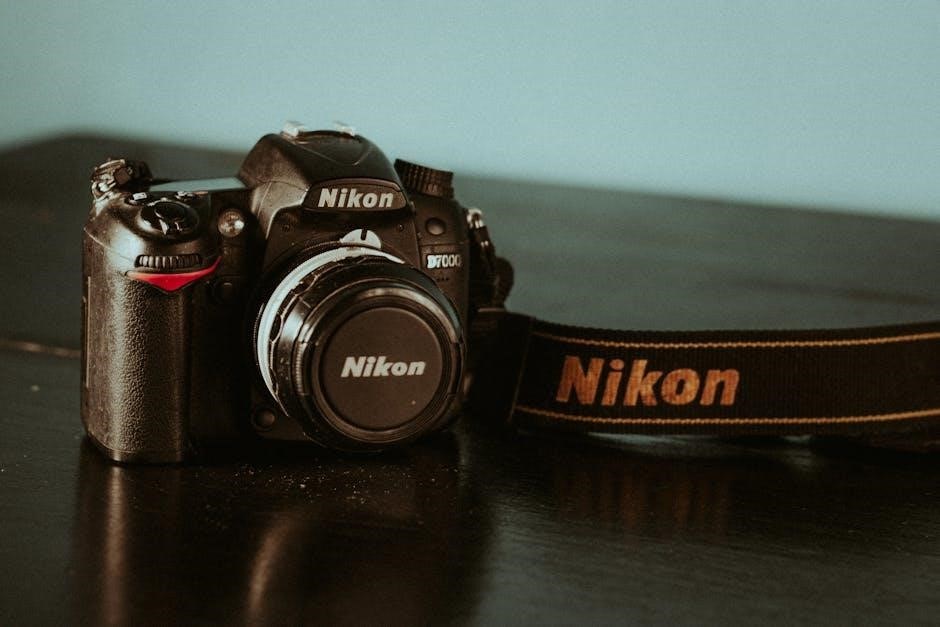
Advanced Features and Customization
Explore advanced modes like Manual, Aperture Priority, Shutter Priority, and Program Mode. Customize settings to personalize camera functions, enhancing control over your photography experience.
5.1 Manual Modes (M, A/Av, S/Tv, P)
Manual modes (M, A/Av, S/Tv, P) offer precise control over camera settings. M (Manual) mode allows full control over aperture and shutter speed. A/Av (Aperture Priority) mode lets you set the aperture, while the camera adjusts the shutter speed. S/Tv (Shutter Priority) mode enables manual shutter speed selection, with the camera setting the aperture. P (Program) mode provides automatic settings but allows adjustments for creative flexibility. These modes empower photographers to tailor exposures to their artistic vision, making them ideal for advanced shooters seeking customization.
5.2 Custom Settings Overview
The Nikon D3300 offers customizable settings to tailor camera behavior to individual preferences. Users can adjust autofocus modes, metering, and shooting options. Custom settings include AF mode selection (AF-A, AF-C, AF-S), metering modes (Matrix, Center-weighted, Spot), and ISO sensitivity control. Additionally, options like noise reduction, bracketing, and HDR settings provide flexibility. These customizations allow photographers to fine-tune the camera’s performance for specific shooting scenarios, enhancing creativity and workflow efficiency. The menu provides an intuitive interface for modifying these settings, ensuring optimal results in various lighting and compositional conditions.
Image and Video Quality Settings
Optimize your Nikon D3300’s image and video quality with its 24.2MP CMOS sensor. Capture still images in various resolutions and record video in 1080p at 60p, 50p, 30p, 25p, or 24p. The camera supports MOV format for video and JPEG or RAW for photos, ensuring versatility and professional-grade output.
6.1 Photo Resolution and Quality
The Nikon D3300 captures stunning images with its 24.2-megapixel CMOS sensor, offering a maximum resolution of 6000 x 4000 pixels. It supports multiple still image resolutions, including 6000×4000, 4496×3000, and 2992×2000 pixels. For enhanced quality, shoot in RAW format to retain maximum detail, ideal for post-processing. JPEG format is also available in fine, normal, and basic settings, allowing you to balance file size and quality. The camera’s high-resolution sensor ensures crisp and vibrant photos, making it perfect for professional-grade photography and creative editing.
6.2 Video Resolution and Frame Rates
The Nikon D3300 supports Full HD video recording at 1080p with frame rates of 60p and 50p, ensuring smooth motion capture. It also offers 720p resolution at 60p for smaller file sizes. Videos are encoded in H.264/MPEG-4 format, providing efficient compression without compromising quality.
The camera allows you to shoot in 1080p at 24p, 25p, 30p, 50p, or 60p, and 720p at 50p or 60p. A 1.3x crop mode is available in 1080p for sharper footage. Maximum recording time per clip is 29 minutes and 59 seconds, with a 4GB file size limit. This versatility makes the D3300 suitable for both casual and creative video projects.
6.3 Compression and File Formats
The Nikon D3300 uses H.264/MPEG-4 compression for video, ensuring efficient file sizes without compromising quality. Videos are stored in MOV format, while still images are saved as JPEG or RAW files. RAW files are uncompressed, providing maximum image detail for post-processing. The camera supports various image resolutions and compression levels, allowing users to balance file size and quality based on their needs. For optimal performance, the manual recommends using high-speed memory cards, especially when recording video in high resolutions or frame rates.
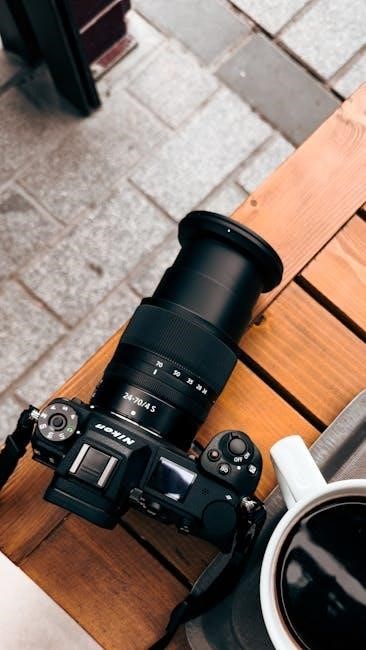
Focusing and Metering
The Nikon D3300 features advanced focusing and metering systems to ensure sharp images and accurate exposures, catering to various shooting conditions and creative needs.
7.1 Autofocus Modes and AF-Area Modes
The Nikon D3300 offers multiple autofocus modes, including AF-A (auto-servo), AF-S (single-servo), and AF-C (continuous-servo), each tailored for different shooting scenarios. AF-A automatically switches between AF-S and AF-C based on subject movement, while AF-S is ideal for stationary subjects and AF-C for moving ones. The camera also features 11 AF points, allowing precise control over focus placement. Additionally, AF-area modes like Single Point, Dynamic Area, 3D Tracking, and Auto-Area enable photographers to customize focus acquisition based on their creative vision and the scene’s demands.
7.2 Metering Modes
The Nikon D3300 features three metering modes: Matrix, Center-Weighted, and Spot. Matrix metering analyzes the entire scene to balance exposure, ideal for most shooting situations. Center-Weighted prioritizes the central area of the frame, useful for portraits. Spot metering measures light from a small area, perfect for high-contrast scenes or precise exposure control. These modes ensure accurate exposure by adapting to various lighting conditions, allowing photographers to capture images with optimal brightness and detail.

Flash and Lighting
The Nikon D3300 features a built-in flash for added illumination and supports external flash units for enhanced lighting control, ensuring versatile options for capturing well-lit images.
8.1 Built-in Flash Usage
The Nikon D3300 features a built-in pop-up flash, ideal for adding light in low-light situations. To activate it, press the flash button located on the front of the camera. The flash automatically adjusts its power based on the scene, but you can also manually adjust flash compensation for more control. The built-in flash has a guide number of 12 (ISO 100, meters) and can cover a wide-angle of 18mm. Note that using non-Nikon accessories may void the warranty or cause operational issues. Always ensure the flash is clean and free of obstructions for optimal performance.
8.2 Using External Flash Units
The Nikon D3300 supports external flash units, such as Nikon Speedlights, for advanced lighting control. Ensure compatibility with Nikon’s Creative Lighting System for optimal performance. Attach the flash to the camera’s hot shoe or use wireless mode for off-camera lighting. Adjust flash settings via the camera menu or the flash unit itself. The built-in commander mode allows the built-in flash to control external units. For best results, use Nikon-approved flash accessories to avoid compatibility issues and maintain warranty validity. Always clean and maintain external flash units to ensure proper functionality.
8.3 Working with External Lighting
The Nikon D3300 supports external lighting solutions for enhanced creativity. Use Nikon Speedlights or third-party units compatible with the camera’s hot shoe. Position external lights strategically to achieve desired effects, such as reducing shadows or adding depth. Utilize the built-in flash as a commander to control remote Speedlights wirelessly. Experiment with lighting setups to improve image quality and capture unique moods. Always test external lighting configurations before final shoots and refer to the manual for optimal settings. Properly maintain external lighting equipment to ensure consistent performance and longevity.
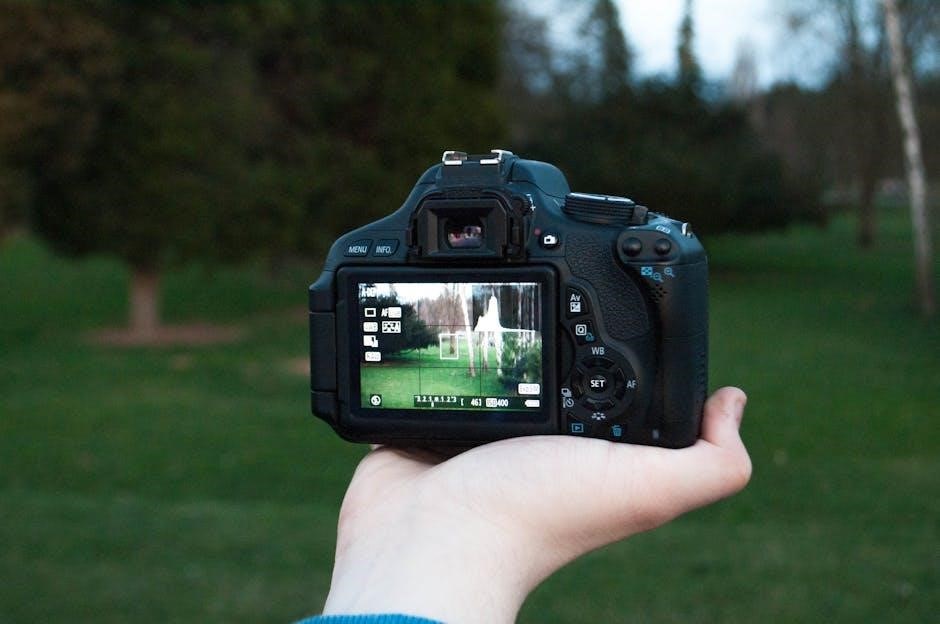
Live View and Video Mode
Live View allows you to preview shots on the LCD screen, aiding composition and focus. Video mode enables high-quality recording with manual controls for creative filmmaking techniques.
9.1 Activating Live View
To activate Live View on the Nikon D3300, press the LV button located on the back of the camera. This switches the display from the optical viewfinder to the LCD screen, allowing you to preview your shots. Use the info button to access settings like exposure compensation and autofocus mode. The i menu provides additional options for customization. Live View is ideal for precise composition and focus control, though it may drain the battery faster. Adjust screen brightness if needed, and use the histogram for exposure checks. Exit Live View by pressing the LV button again or using the shutter release.
9.2 Recording Video
To record video on the Nikon D3300, switch to Live View mode and navigate to the video settings in the menu. Select your desired resolution (up to 1080p at 60fps) and frame rate. Use the i button to access additional options like autofocus modes and audio settings. Press the shutter release or the dedicated video recording button to start filming. The camera will automatically adjust exposure, but you can manually adjust settings using the control dial. Stabilization can be enabled if your lens supports it. Monitoring audio levels is also possible for better sound quality during recording.
9.3 Video Focusing Techniques
For smooth video focusing, use AF-S or AF-I lenses, which support continuous autofocus during recording. Enable AF-F mode in the camera settings for seamless subject tracking. Pre-focus on your subject before starting recording for precise control. Use the AE-L/AF-L button to lock focus manually if needed. For dynamic compositions, utilize the camera’s 11-point autofocus system to track moving subjects. Manual focus is also available for creative control, allowing precise adjustments using the lens focus ring. These techniques ensure sharp and professional-looking video footage with the Nikon D3300.
Playback and Editing
The Nikon D3300 allows easy review of photos and videos via its LCD screen. Basic editing tools like trimming, resizing, and brightness adjustment are available in-camera for quick enhancements.
10.1 Reviewing Photos and Videos
The Nikon D3300 allows you to review photos and videos directly on its 3-inch LCD screen. Use the multi-selector to navigate through images, zoom in for detail, and check shooting information like ISO, aperture, and shutter speed. Videos can be played back with audio, and you can pause or rewind using the playback controls. The camera also offers a histogram view to assess exposure. You can delete unwanted photos or protect favorites during playback. Additionally, basic video editing tools, such as trimming clips, are available in-camera for quick adjustments.
10.2 Basic In-Camera Editing
The Nikon D3300 offers basic in-camera editing through its Retouch Menu, allowing you to enhance photos without a computer. Options include trimming video clips to remove unwanted footage, adjusting exposure compensation for brighter or darker images, and converting images to black and white or sepia tones. You can also apply filters, correct red-eye, and adjust color balance. Additionally, the Image Overlay feature lets you combine two photos into one for creative effects. These tools provide quick and convenient post-processing options to refine your photos and videos directly on the camera.
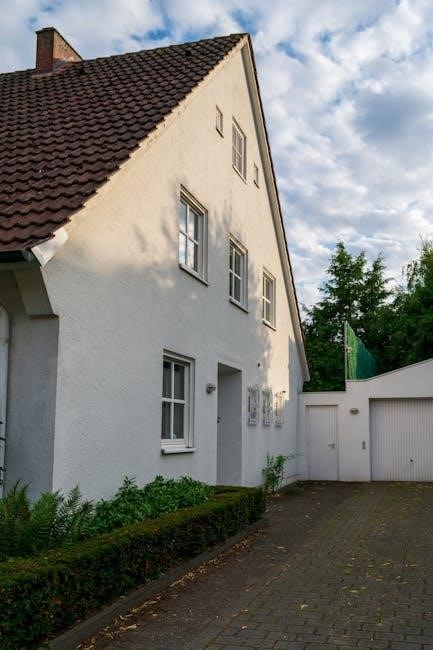
Camera Maintenance
Regularly clean the camera and lens with soft cloths and avoid harsh chemicals. Store the camera in a dry, cool place to prevent damage and ensure longevity.
11.1 Cleaning the Camera and Lens
Regular cleaning ensures optimal performance and longevity. Use a soft, dry cloth to wipe the camera body and lens. For stubborn smudges, lightly dampen the cloth with distilled water. Avoid harsh chemicals or alcohol, as they can damage coatings. Use an anti-static brush for the mirror and viewfinder. Never touch the lens surface; instead, gently blow with compressed air or use a microfiber cloth. Clean the sensor by enabling the camera’s cleaning mode or use a specialized brush. Always handle the camera with clean, dry hands to prevent smudges and damage.
11.2 Proper Storage and Handling
Store the Nikon D3300 in a cool, dry place away from direct sunlight and moisture. Use a protective case when not in use to prevent scratches and damage. Handle the lens with care, avoiding fingerprints and smudges. Store the camera with a UV filter to protect the lens surface. Keep batteries in a separate, dry compartment to maintain their performance. Avoid extreme temperatures and humidity, as they can damage internal components. Always ensure the camera is turned off before storing it to conserve battery life and prevent accidental damage.
11.3 Updating Firmware
Regularly update the Nikon D3300’s firmware to ensure optimal performance and access to the latest features. Download the firmware from Nikon’s official website and follow the instructions provided. Use a fully charged battery or connect the camera to a power source during the update. Do not interrupt the process, as it may cause permanent damage. After updating, restart the camera to apply the changes. Always verify the firmware version in the camera menu to confirm the update was successful. Updates enhance functionality, fix bugs, and improve compatibility with lenses and accessories.
Troubleshooting Common Issues
Identify and resolve common issues like error messages, connectivity problems, or shutter malfunctions by referring to the manual or contacting Nikon support for detailed solutions and repairs.
12.1 Error Messages and Solutions
The Nikon D3300 may display error messages such as “Err” or “Card error,” indicating issues like faulty memory cards or improper lens attachment. Resetting the camera or formatting the memory card often resolves these problems. For lens errors, ensure proper attachment and clean the contacts. If the camera freezes, remove the battery and restart. Refer to the manual for specific solutions or contact Nikon support for advanced troubleshooting. Regular maintenance and firmware updates can prevent many common issues, ensuring smooth camera operation and optimal performance.
12.2 Resolving Connectivity Problems
Connectivity issues with the Nikon D3300, such as failed USB connections or wireless transfers, can often be resolved by restarting the camera and ensuring all cables are securely connected. Check that the USB port and cable are functional and free from damage. For wireless issues, verify that Wi-Fi is enabled and the camera is paired correctly with your device. Updating the camera’s firmware and using compatible software like Nikon Transfer 2 can also address connectivity problems. If issues persist, consult the manual or contact Nikon support for further assistance.
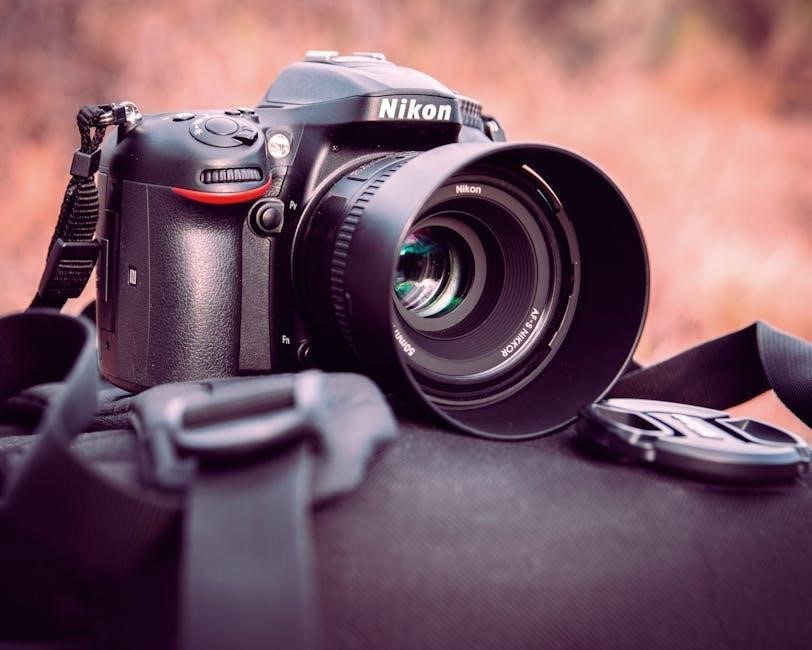
Additional Resources
Explore the Nikon D3300 manual PDF, online forums, and software tools like Nikon Transfer 2 for enhanced functionality and troubleshooting support.
13.1 Nikon D3300 Manual PDF
The Nikon D3300 Manual PDF is a comprehensive guide available for free download from Nikon’s official website or trusted sources. It covers everything from basic setup to advanced features, ensuring users can fully utilize their camera. The manual includes detailed instructions on shooting modes, autofocus, metering, and video recording, as well as troubleshooting tips. Available in multiple languages, it’s accessible to a global audience. Downloading the PDF allows users to reference it anytime, making it an essential resource for mastering the Nikon D3300.
13.2 Online Communities and Forums
Active online communities and forums dedicated to the Nikon D3300 provide valuable resources for users. Platforms like Nikon’s official forum, DPReview, and Reddit host discussions where photographers share tips, troubleshoot issues, and showcase their work. These communities are ideal for learning new techniques, resolving common problems, and connecting with other D3300 users. Many forums also feature expert advice and detailed guides, making them indispensable for both beginners and advanced photographers seeking to maximize their camera’s potential.
13.3 Software and Apps for Nikon D3300
The Nikon D3300 supports various software and apps to enhance your photography experience. Nikon Manual Viewer 2 allows you to view the camera’s manual on your smartphone or tablet. ViewNX 2 simplifies photo editing and management, while SnapBridge enables wireless image transfer to smart devices. Additionally, third-party apps like Adobe Lightroom and Camera Connect offer advanced editing and remote shooting capabilities. These tools help streamline workflows, improve image quality, and expand creative possibilities for D3300 users, making them essential for both beginners and advanced photographers.


